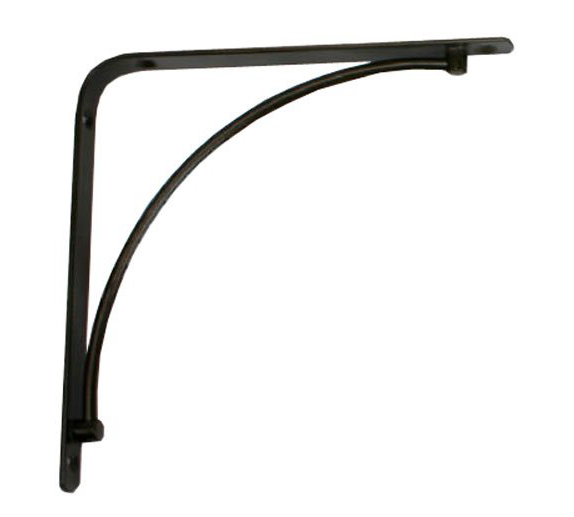In addition, according to the China Photovoltaic Industry Alliance, it is estimated that China's polysilicon production will be about 80,000 tons in 2013, the output of battery components will exceed 23GW, and the installed capacity of new PV will exceed 8GW.
The following is the full text of China's PV industry operation in the first half of 2013:
In the first half of 2013, due to the combination of policy guidance and market-driven factors, the development of China's photovoltaic industry has improved compared with the same period in 2012. The overall operation of the industry has stabilized, and the output of polysilicon has rebounded month by month. Some battery companies have improved their operating conditions. The domestic PV market has steadily expanded.
First, the manufacturing process
(a) polysilicon
The total amount declined slightly year-on-year, but the development situation is improving. In the first half of the year, China's polysilicon production capacity was about 90,000 tons, accounting for about 20.5% of the world; the output was 31,000 tons, down 25% year-on-year, accounting for about 27% of the world. Production has gradually picked up, from 3,600 tons in January to 6,500 tons in June, and a few back-off backbone enterprises are planning to resume production.
Imports are still at a high level, and annual imports are expected to decrease. In the first half of the year, China imported 39,000 tons of polysilicon, which was flat year-on-year, mainly from the United States, South Korea, Germany and other countries, with imports accounting for 33%, 29% and 24% respectively. With China's implementation of polysilicon "double-reverse" measures in the United States, South Korea and other countries, the annual import of polysilicon is expected to decrease, is expected to be between 60,000-80,000 tons.
The industrial concentration has been continuously improved and the industrial layout has become more rational. In the first half of the year, there were only 8 polysilicon enterprises in China, of which Jiangsu Zhongneng produced 22,000 tons, accounting for 71% of the country, and the industrial concentration gradually increased. Nearly 80% of polysilicon enterprises have stopped production, and some enterprises that have been out of production for a long time and are not competitive will be gradually eliminated by the market. Due to the pressure of product prices, some regions with abundant energy resources and low electricity costs (such as Xinjiang and Inner Mongolia) have gradually become The important direction of the polysilicon industry transfer.
(2) Battery components
The scale of production remained stable and exports were increasingly diversified. In the first half of the year, China's battery module production capacity exceeded 40GW, accounting for about 67% of the world; the output was about 11.5GW, accounting for 67.5% of the world, which was flat year-on-year. The export volume was about 7.5GW, and the export value was nearly 5 billion US dollars, down 37% year-on-year. Europe is still the main export destination, but the proportion has dropped from nearly 70% in the same period last year to about 50%, and the proportion of exports from Japan, the United States and India has been increasing.
The price of components has risen slowly and production costs have continued to fall. As with the international price trend, the price of domestic polysilicon battery modules has increased from nearly 4 yuan/watt at the beginning of 2013 to the current 4.3 yuan/watt. Production costs continue to decline, the industry's mainstream production costs fell to less than 0.6 US dollars / watt, some key enterprises have nearly 0.5 US dollars / watt, the end of the year is expected to fall below 0.5 US dollars / watt.
Shipments of key enterprises continue to increase, and industrial concentration is expected to increase further. The shipments of backbone battery components have increased by different degrees year-on-year, and the market advantage has been continuously enhanced. In the first half of the year, the shipments of the top 7 component manufacturers in China have exceeded 5GW, accounting for 45% of the national total. At the same time, industrial integration is accelerating, and Wuxi Suntech and Henderson Photovoltaic have successively bankrupted and reorganized, and industrial concentration is expected to further increase.
The production and operation status of the enterprise has improved, and some enterprises are expected to turn losses during the year. With the increase in component prices and cost, the business situation of the company has been greatly improved. The gross profit margin of some enterprises has turned positive. The gross profit of individual key enterprises has reached about 10%, and it is expected to turn losses into profits at the end of the year. The Sino-European PV "double-reverse" case settlement plan was initially reached, which has a positive effect on promoting the industry out of the predicament.
The financial situation of the company is still tight, and the arrears of accounts are more serious. The total liabilities of China's top 10 PV companies still exceed RMB 100 billion. Due to the sharp decline in product gross profit, the tightening of credit facilities of financial institutions, the application of support policies and the lack of funds, and the imperfect commercial credit environment, the arrears of accounts of domestic PV companies are still serious. The turnover days of accounts receivable in the first quarter of 2011, 2012 and 2013 were 60 days, 104 days and 116 days respectively. With the deepening of industrial integration and bankruptcy and restructuring of enterprises, the situation of bad debts may be further aggravated.
(3) Other links
The development status of photovoltaic manufacturing links such as ingots, pull rods and slicing has stabilized and rebounded. The development of supporting components such as photovoltaic inverter manufacturing has also been getting better and better, and some key enterprises have increased orders and entered full-load production. In the first half of the year, wafer production was about 15 GW, which was flat year-on-year; processing costs continued to fall and fell below $0.11/W. The output of photovoltaic inverters was about 2.9GW, an increase of over 60% year-on-year.
Second, the market application link
The global PV market continues to grow, with a shift in focus to China, Japan, and the United States. In the first half of the year, the global PV market demand was 16GW, up 9% year-on-year. Among them, China has about 2.8GW, Japan has about 3GW, Germany has about 1.9GW, and the United States has 1.6GW. The four countries account for about 60% of the world. The market demand is generally on the rise. It is estimated that the global annual installed capacity will reach 35GW, including about 10GW in Europe, 8GW in China, 5GW in Japan, and 3.5GW in the US. The market focus is gradually shifted from Europe to China, Japan and the United States.
The domestic market is rapidly expanding, and the problem of grid connection is still the bottleneck restricting market development. In the first half of the year, China's 2.8GW installed 1.5GW from the second batch of Golden Sun and Photovoltaic construction projects last year, 1.3GW is a large-scale photovoltaic power station; the annual installed capacity is expected to reach 8GW, including 5GW for large-scale photovoltaic power plants, 2GW for Golden Sun Demonstration Project, and distributed power generation. Demonstration area 1GW. However, the PV power plant and the power grid construction cycle are not synchronized, and the coordination between the power station and the power grid development plan will remain the key to further expansion of the domestic market.
The photovoltaic application gradually realizes the user-side parity online access, and the policy-driven to market-driven transition. Traditional photovoltaic countries such as Germany and Italy are continually reducing PV subsidies or setting up installed ceilings. However, with the rapid decline in product prices, some countries' PV power generation has achieved user-side parity, and applications will be driven by policy-driven to market-driven.
Third, the follow-up development outlook
In mid-July 2013, the “Several Opinions of the State Council on Promoting the Healthy Development of the Photovoltaic Industry†(Guo Fa [2013] No. 24, hereinafter referred to as “Opinionsâ€) has been officially released, and regulates the development of the photovoltaic industry, expands the domestic application market, and promotes Industrial transformation and upgrading have been coordinated. According to the spirit of the "Opinions", all relevant departments are actively carrying out work to accelerate the formulation and implementation of various supporting policies and measures such as the normative conditions for the photovoltaic manufacturing industry, the implementation opinions of the merger and reorganization of photovoltaic enterprises, the photovoltaic standard system, and the management measures for subsidies for subsidies for photovoltaic power generation. .
With the initial ruling of the US and South Korea polysilicon “double reverseâ€, the Sino-European PV “double-reverse†settlement plan, the accelerated start of the domestic PV market, and the continuous improvement of the external environment of industrial development, the overall development of China's PV industry is expected to stabilize and rebound in the second half of the year. According to the calculation of China's Photovoltaic Industry Alliance, it is estimated that China's polysilicon production will be about 80,000 tons in 2013, the output of battery components will exceed 23GW, and the installed capacity of new PV will exceed 8GW.
This shelf bracket with a decorative design match any any wall-mounted shelving and home decor. It is easily installed with screws to support wall-mounted shelf boards. Excellent for durability and utility featuring a basic design.
The shelf bracket supports shelf boards to customize your wall storage and display space
The material is including steel,stainless steel,cast iron are durable,chip and corrosion resistant.
Supports up to 100 lbs evenly distributed per pair.
You can create custom storage solutions with adjustable shelf heights
Compatible with wood, plastic, or metal shelving boards
OEM and ODM are welcome.


Shelving Bracket,Metal Shelf Brackets,Cast iron shelf brackets,Diy Shelf Brackets,Iron Shelf Brackets
Foshan Nanhai Xin Jianwei Hardware Co., Ltd , http://www.aaghardware.com
![<?echo $_SERVER['SERVER_NAME'];?>](/template/twentyseventeen/skin/images/header.jpg)